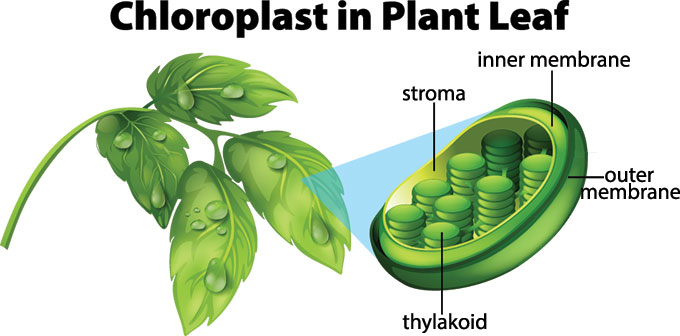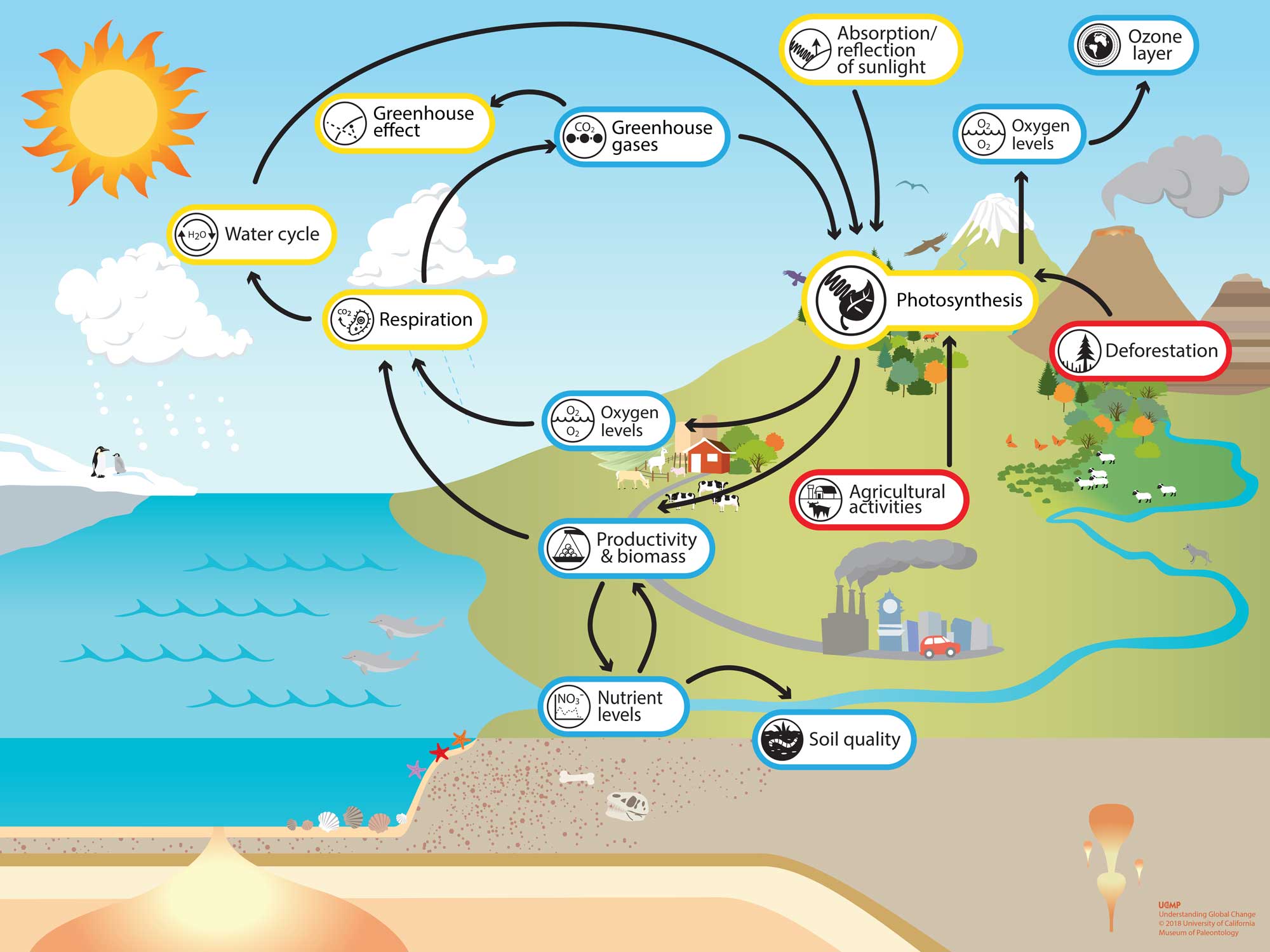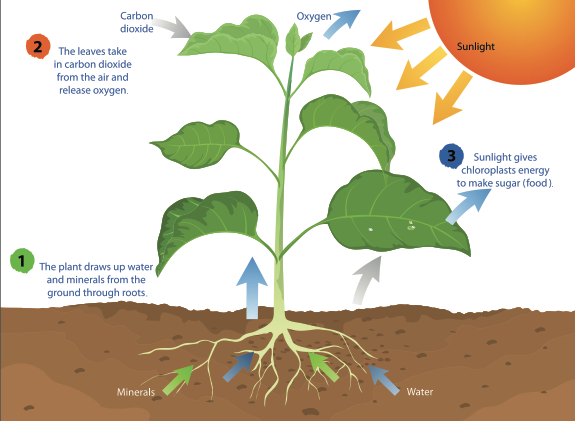1 Explain the process of photosynthesis in plants
- Author: mytutor.co.uk
- Published Date: 04/04/2022
- Review: 4.87 (960 vote)
- Summary: Photosynthesis is a process by which plants produce energy for its survival. It follows a very simple chemical reaction:carbon dioxide + water (+sunlight)
- Source: 🔗
2 Photosynthesis | OregonForests
- Author: oregonforests.org
- Published Date: 08/21/2022
- Review: 4.7 (225 vote)
- Summary: Photosynthesis is a natural process by which trees and plants use energy from the sun and carbon dioxide from the air to make the food they need to live and
- Source: 🔗
3 Photosynthesis – Definition, Process, and Diagrams – Byju’s
- Author: byjus.com
- Published Date: 06/29/2022
- Review: 4.47 (376 vote)
- Summary: Photosynthesis is a process by which phototrophs convert light energy into chemical energy, which is later used to fuel cellular activities
- Matching search results: As already stated, photosynthesis occurs in the leaves and the specialized cell organelles responsible for this process is called the chloroplast. Structurally, a leaf comprises a petiole, epidermis and a lamina. The lamina is used for absorption of …
- Source: 🔗
4 Explainer: How photosynthesis works | Science News Explores

- Author: snexplores.org
- Published Date: 01/05/2022
- Review: 4.34 (320 vote)
- Summary: · Photosynthesis is the process of creating sugar and oxygen from carbon dioxide, water and sunlight. It happens through a long series of chemical
- Matching search results: Photosynthesis is the process of creating sugar and oxygen from carbon dioxide, water and sunlight. It happens through a long series of chemical reactions. But it can be summarized like this: Carbon dioxide, water and light go in. Glucose, water and …
- Source: 🔗
5 Photosynthesis – Understanding Global Change

- Author: ugc.berkeley.edu
- Published Date: 06/29/2022
- Review: 4.09 (400 vote)
- Summary: Photosynthesis is the processes of using sunlight to convert chemical compounds (specifically carbon dioxide and water) into food
- Matching search results: Fossil fuels are derived from the burial of photosynthetic organisms, including plants on land (which primarily form coal) and plankton in the oceans (which primarily form oil and natural gas). While buried, the carbon in the organic material is …
- Source: 🔗
6 Photosynthesis | Definition, Formula, Process, Diagram, Reactants
- Author: britannica.com
- Published Date: 01/06/2022
- Review: 3.87 (261 vote)
- Summary: photosynthesis, the process by which green plants and certain other organisms transform light energy into chemical energy. During photosynthesis in green
- Matching search results: Fossil fuels are derived from the burial of photosynthetic organisms, including plants on land (which primarily form coal) and plankton in the oceans (which primarily form oil and natural gas). While buried, the carbon in the organic material is …
- Source: 🔗
7 Exploring Undergraduates’ Understanding of Photosynthesis Using
- Author: lifescied.org
- Published Date: 11/01/2021
- Review: 3.75 (419 vote)
- Summary: · However, students do not seem to realize that there are differences between the processes in chemical pathways, location in the plant (Eisen and
- Matching search results: Fossil fuels are derived from the burial of photosynthetic organisms, including plants on land (which primarily form coal) and plankton in the oceans (which primarily form oil and natural gas). While buried, the carbon in the organic material is …
- Source: 🔗
8 Intro to photosynthesis (article) – Khan Academy
- Author: khanacademy.org
- Published Date: 02/17/2022
- Review: 3.42 (205 vote)
- Summary: Photosynthesis is the process in which light energy is converted to chemical energy in the form of sugars. In a process driven by light energy, glucose
- Matching search results: Fossil fuels are derived from the burial of photosynthetic organisms, including plants on land (which primarily form coal) and plankton in the oceans (which primarily form oil and natural gas). While buried, the carbon in the organic material is …
- Source: 🔗
9 Photosynthesis Process for Kids Simplified for Easy Understanding
- Author: biologywise.com
- Published Date: 09/18/2022
- Review: 3.21 (329 vote)
- Summary: In science, photosynthesis is defined as a process wherein the synthesis of compounds is facilitated with the aid of radiant energy, usually in plants, but also
- Matching search results: In case of photosynthesis, carbon dioxide and water react in the presence of light energy derived from sunlight to produce sugar and oxygen. In case of respiration, sugar and oxygen are burned to produce energy and carbon dioxide. In the first case, …
- Source: 🔗
10 Process of Photosynthesis – Cliffs Notes
- Author: cliffsnotes.com
- Published Date: 12/22/2021
- Review: 3.01 (578 vote)
- Summary: The process of photosynthesis is conveniently divided into two parts: the energy-fixing reaction (also called the light reaction) and the carbon-fixing
- Matching search results: After passing through the electron transport system, the energy-rich electrons eventually enter photosystem-I. Some of the energy of the electron is used to pump protons across the thylakoid membrane, and this pumping sets up the potential for …
- Source: 🔗
11 What is photosynthesis? | Live Science
- Author: livescience.com
- Published Date: 05/17/2022
- Review: 2.81 (154 vote)
- Summary: · Photosynthesis is the process used by plants, algae and certain bacteria to turn sunlight, carbon dioxide (CO2) and water into food (sugars)
- Matching search results: Anoxygenic photosynthesis, meanwhile, uses electron donors that are not water and do not produce oxygen, according to “Anoxygenic Photosynthetic Bacteria” by LibreTexts (opens in new tab). The process typically occurs in bacteria such as green …
- Source: 🔗
12 What is Photosynthesis | Smithsonian Science Education Center

- Author: ssec.si.edu
- Published Date: 07/24/2022
- Review: 2.7 (157 vote)
- Summary: · Rather, plants use sunlight, water, and the gases in the air to make glucose, which is a form of sugar that plants need to survive. This process
- Matching search results: Humans, other animals, fungi, and some microorganisms cannot make food in their own bodies like autotrophs, but they still rely on photosynthesis. Through the transfer of energy from the Sun to plants, plants build sugars that humans consume to …
- Source: 🔗
